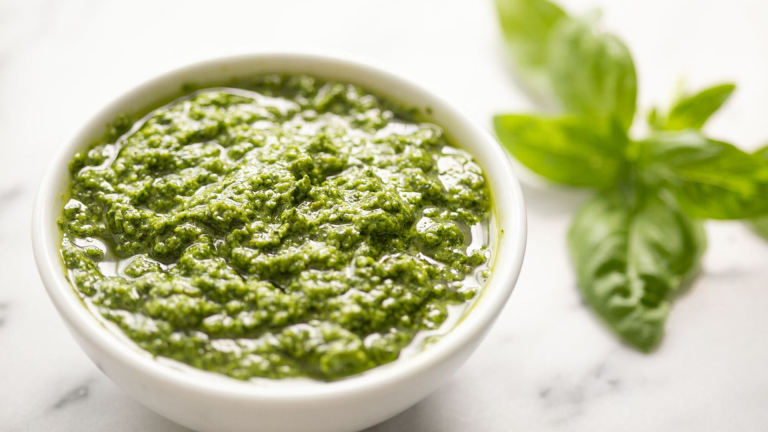Ever looked at your basil plant and wondered what to do with those little purple or white flowers? Most people toss them out, but guess what? Basil flowers are totally edible!
If you’re a fan of pesto (who isn’t?), you might be asking: Can I use basil flowers in pesto too? The answer is yes, and today we’re going to talk all about it.
In this post, I’ll explain what basil flowers are, how they taste, and how you can use them in your next homemade pesto. If you grow your own herbs or love trying new kitchen ideas, this is a fun twist you’ll want to try.
Don’t let those pretty flowers go to waste—turn them into something tasty! Let’s dig into the world of basil flowers and find out how they fit into your pesto plans.
What Are Basil Flowers, and Are They Edible?
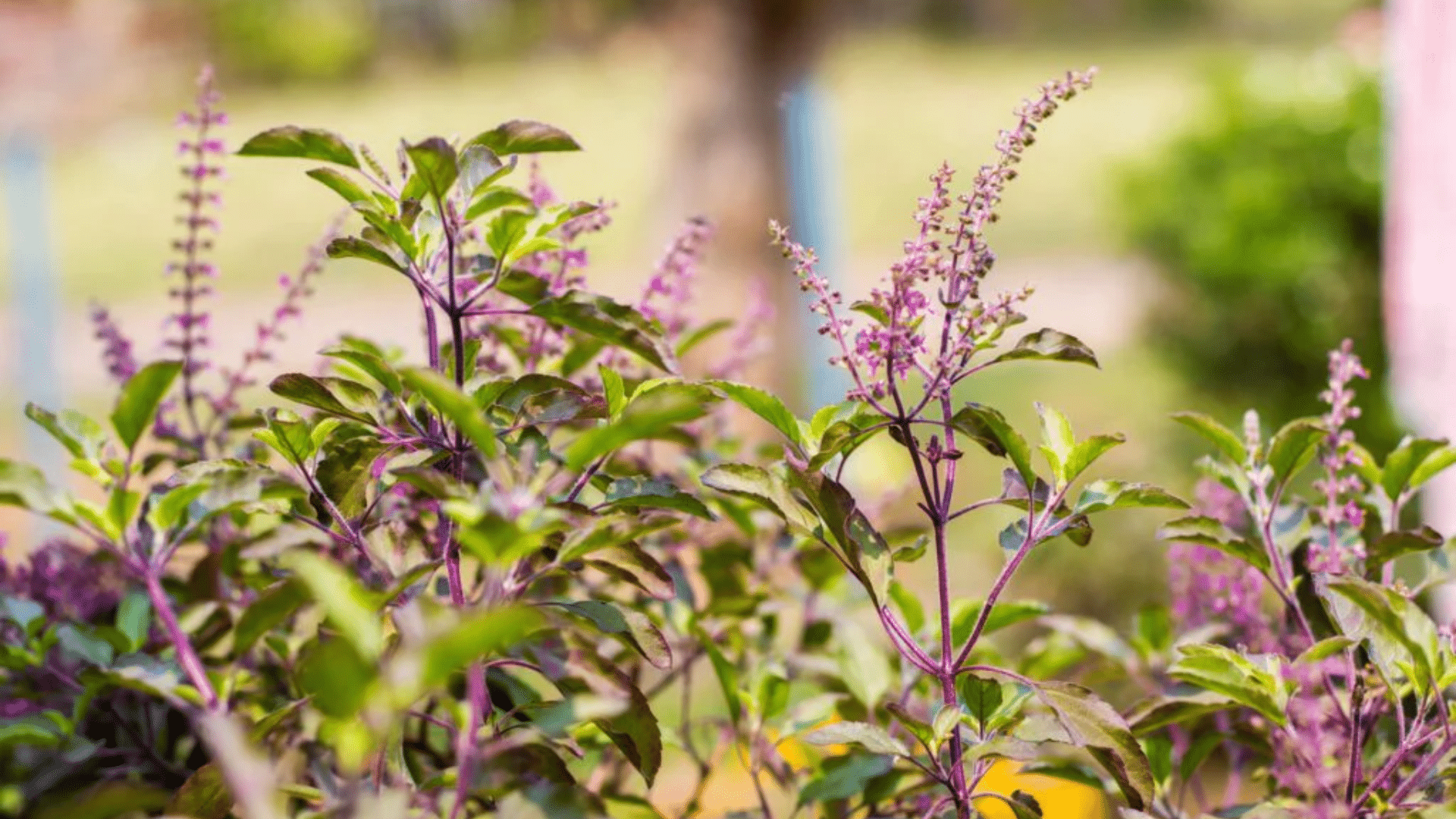
Basil flowers are the small blooms that grow at the top of your basil plant. They usually show up when the plant is getting older or when it’s been growing for a while without being trimmed.
The flowers can be white, pink, or purple, and they look kind of like tiny spikes. A lot of people think these flowers mean the basil is past its prime, but that’s not true! Basil flowers are completely edible.
You can eat them just like the leaves. They have a lighter, slightly more floral flavor compared to basil leaves, but they still taste like basil.
Basil flowers can be used in cooking, salads, teas, and even pesto. They’re safe to eat and can make your dishes look and taste a little more special.
Adding Basil Flowers into Pesto
If you’ve got basil flowers on your plant, don’t throw them out! You can use them in your pesto to switch things up. Basil flowers add a slightly lighter and more floral flavor than the leaves, but they still give that fresh, herby taste we all love.
How to Use Basil Flowers in Pesto:
- Pick them fresh: Use freshly picked basil flowers. They should look bright and healthy, not wilted or dry.
- Use them with the leaves: You don’t need to use only the flowers. Mix them in with your basil leaves to keep that classic flavor, just with a twist.
- Rinse gently: Flowers are delicate, so rinse them gently under cool water to remove any dirt or bugs.
- Use the whole flower: You can use the entire flower head, including the tiny petals and stem. Just make sure it’s clean.
- Blend as usual: Add the flowers into your food processor with the usual pesto ingredients—garlic, nuts, cheese, olive oil, salt, and pepper.
- Taste and adjust: Since the flowers are milder, you may want to add more garlic or cheese to balance the flavor.
Adding basil flowers to your pesto is a fun and easy way to try something new. It helps reduce waste, adds color, and gives your pesto a softer, slightly floral taste. So, next time you see those little blooms on your basil plant, don’t toss them—blend them in and enjoy every bit of your harvest!
Easy Basil Flower Pesto Recipe
If you’ve got basil flowers blooming on your plant, you can turn them into something delicious—pesto! Basil flower pesto has a light, slightly floral flavor that’s still rich and herby, just like the classic version. It’s perfect for pasta, sandwiches, veggies, or even as a dip.
Ingredients
- 1 cup fresh basil flowers (packed, stems removed if tough)
- 1 cup fresh basil leaves (optional, but great for fuller flavor)
- 1/3 cup grated Parmesan cheese
- 1/4 cup pine nuts (or walnuts if you prefer)
- 1–2 garlic cloves (start with one, add more if you like it stronger)
- 1/2 cup extra virgin olive oil
- Salt and pepper to taste
- A squeeze of lemon juice (optional, for brightness)
Step 1: Rinse and Dry the Basil Flowers and Leaves
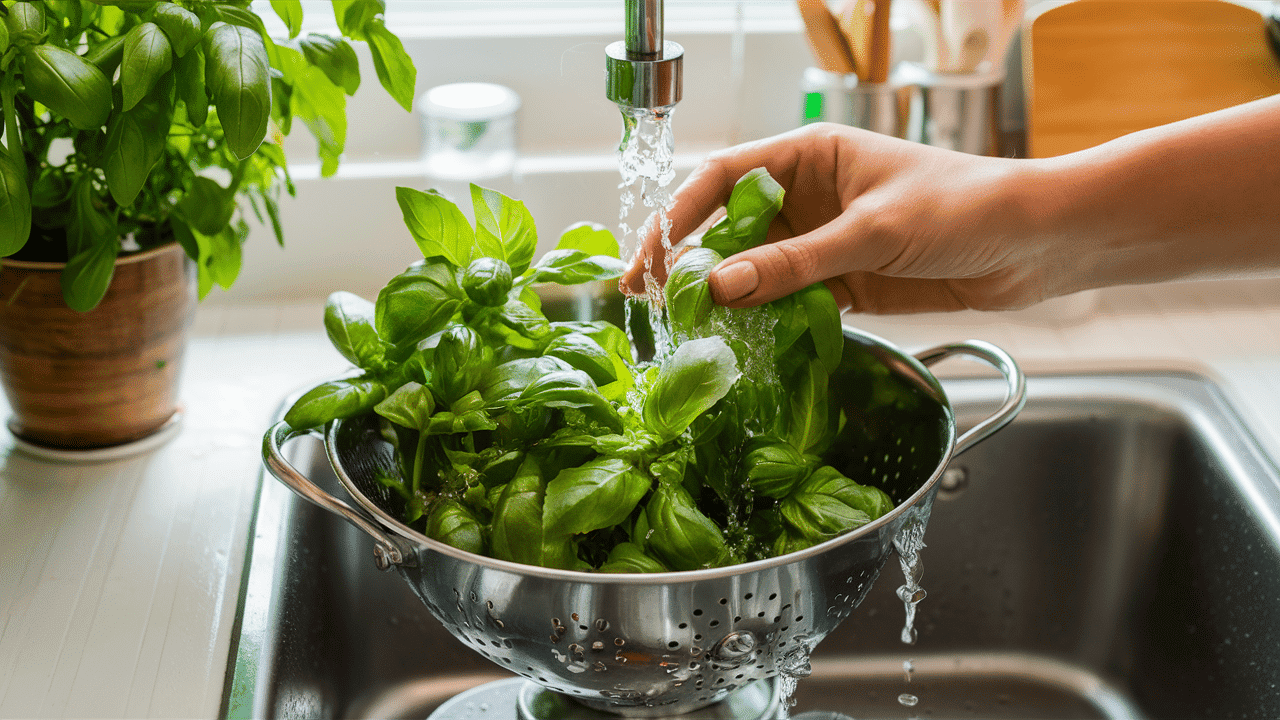
Start by rinsing your fresh basil flowers and leaves under cool running water. This helps remove any dirt or tiny bugs.
Once clean, gently pat them dry with a paper towel. Be careful not to crush the flowers—they’re delicate! You want everything dry so your pesto doesn’t get watery.
Step 2: Toast the Nuts
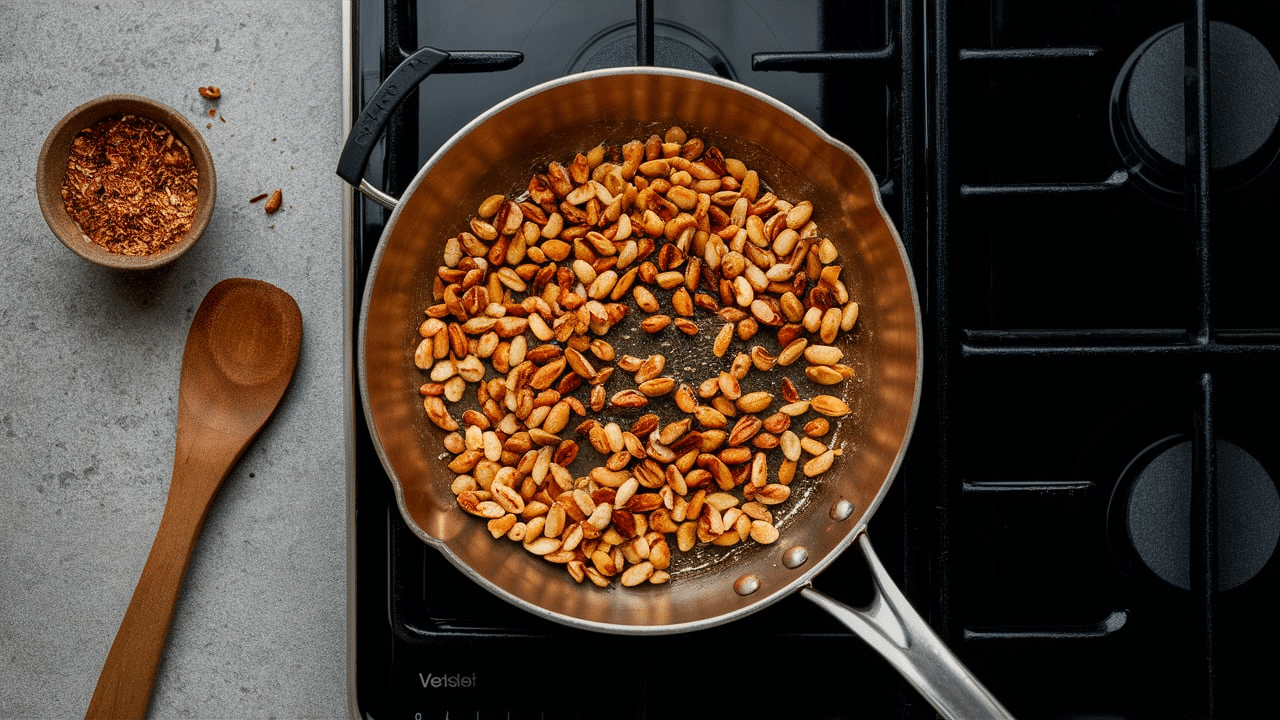
Place your nuts (pine nuts or walnuts both work great) in a dry skillet over medium heat. Toast them for 2–3 minutes, stirring often. You’ll know they’re ready when they turn lightly golden and give off a warm, nutty smell. Remove them from the pan and let them cool while you prep the other ingredients.
Step 3: Add Ingredients to the Food Processor
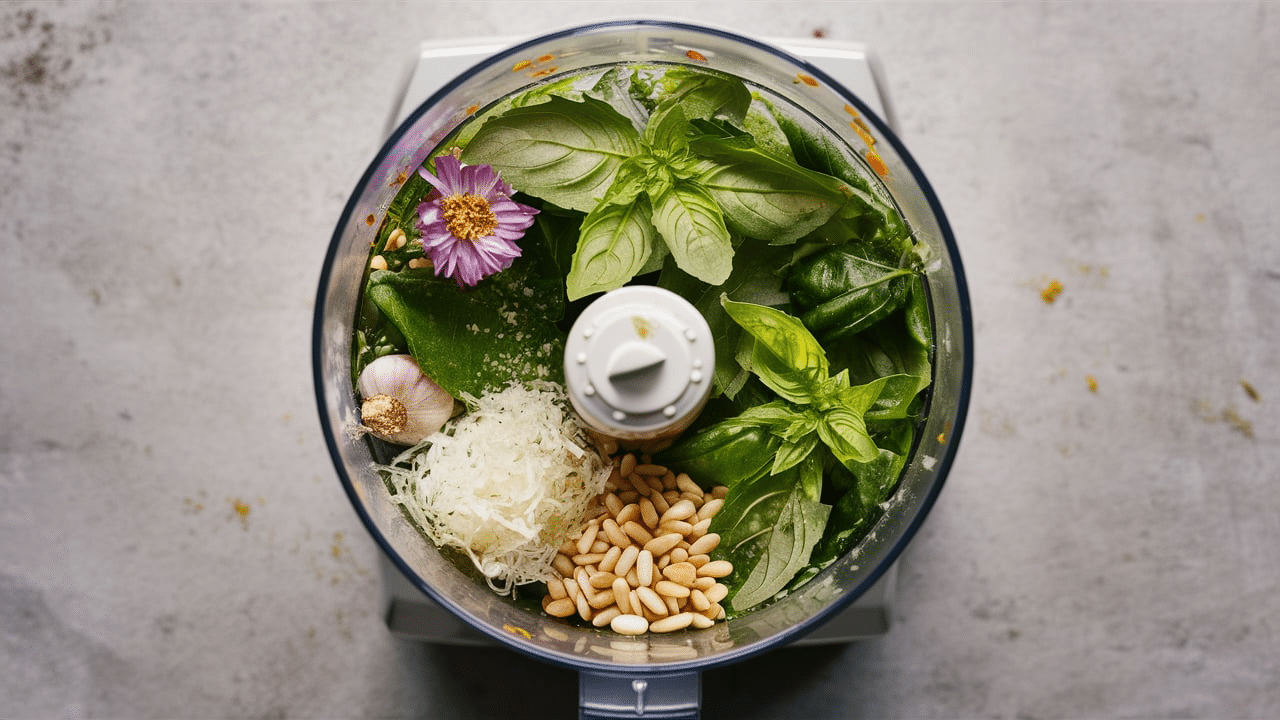
In your food processor or blender, add the basil flowers, basil leaves (if you’re using them), grated Parmesan cheese, cooled nuts, and peeled garlic cloves. These ingredients come together to create your flavor base—fresh, nutty, cheesy, and garlicky! It’s the perfect mix of garden goodness and bold taste to start your pesto off right.
Step 4: Pulse to Break Everything Down
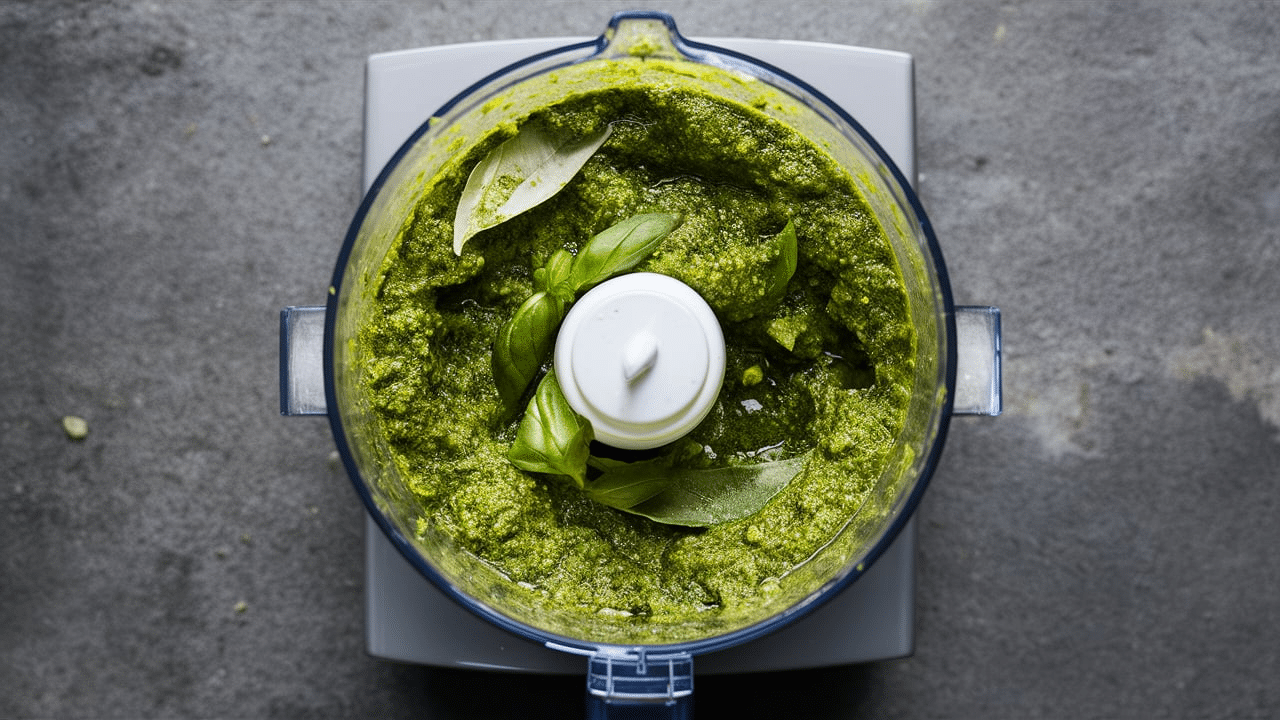
Use the pulse setting to chop everything up into smaller bits. Don’t fully blend yet—you just want to break down the bigger pieces so the texture stays nice. Pulse a few times until the mixture looks rough and crumbly, kind of like a chunky paste. This step helps everything blend more evenly when you add the oil.
Step 5: Drizzle in the Olive Oil While Blending
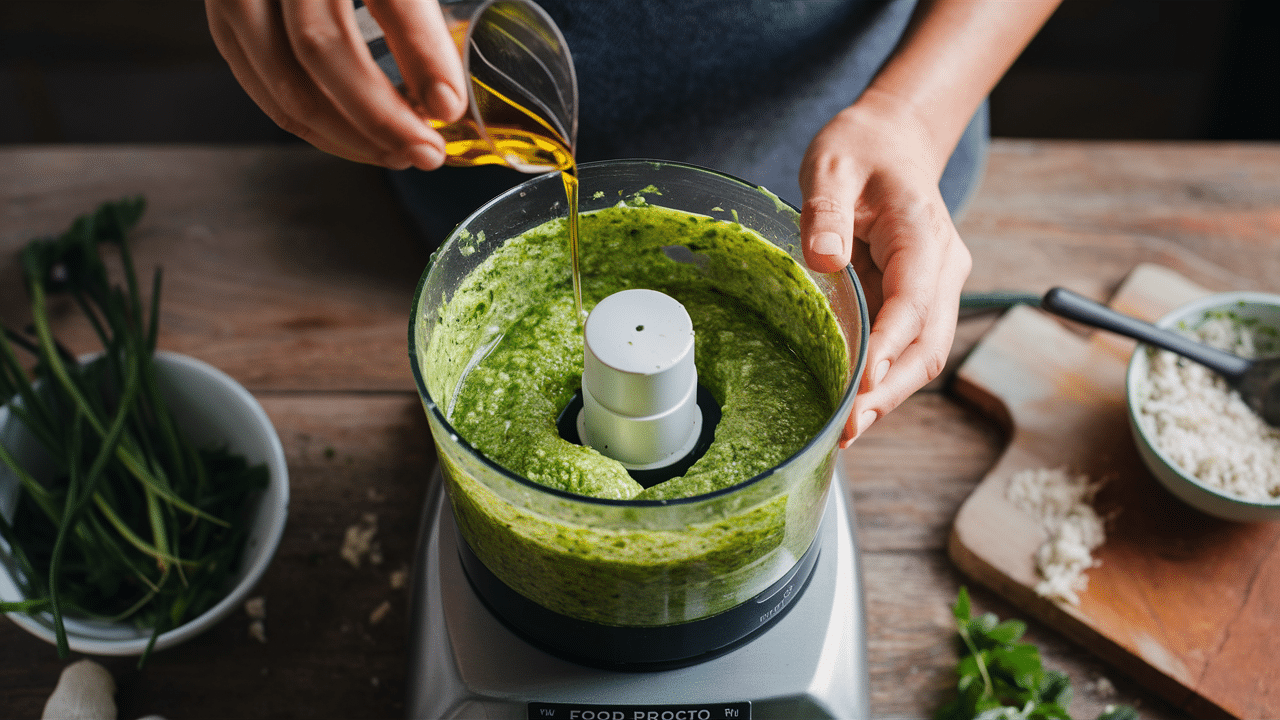
Now, turn on the processor and slowly pour in the olive oil while it blends. This helps everything come together smoothly. You can stop now and then to scrape down the sides with a spatula. Keep blending until you reach the texture you like—some people like it smooth, others like it a little chunky.
Step 6: Taste and Adjust
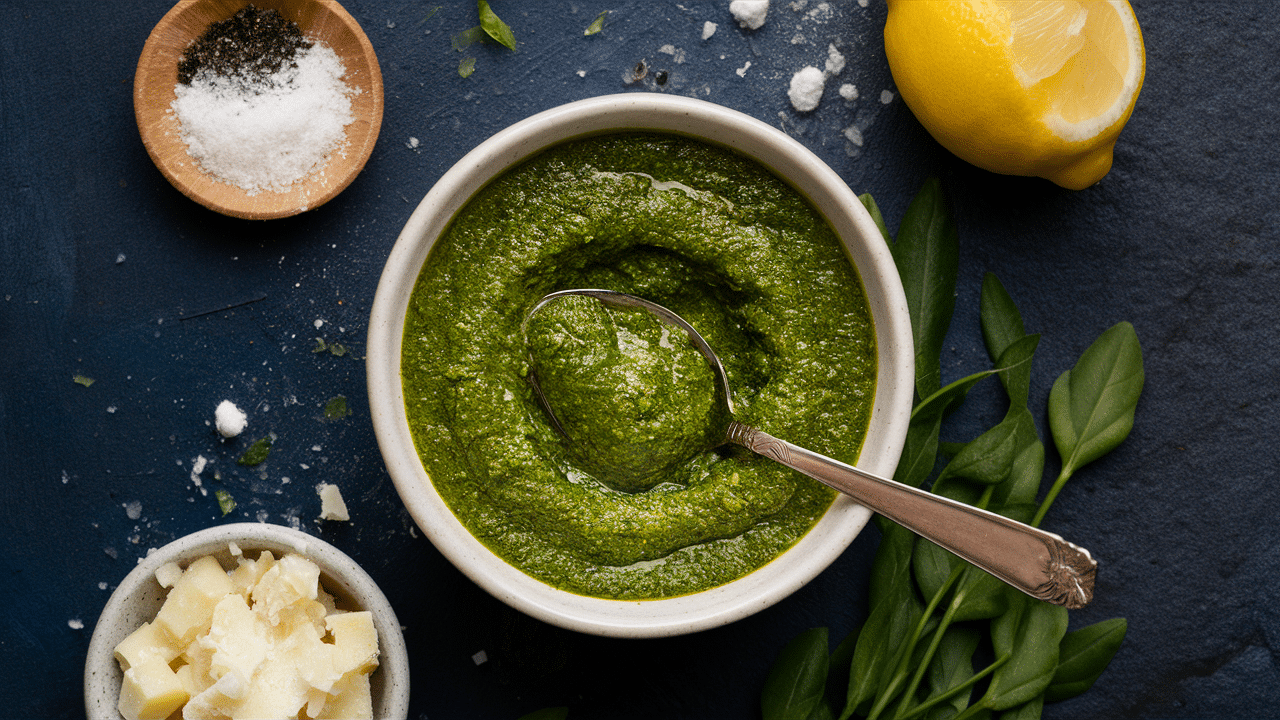
Spoon out a small taste and see how it feels on your tongue—does it need a little extra something? Want more flavor? Add salt and pepper to bring out the taste. Add a squeeze of lemon juice if you want a bright, fresh kick. You can also add a touch more cheese or garlic if you like it bolder. Blend again for a second or two to mix it in.
Step 7: Store and Enjoy
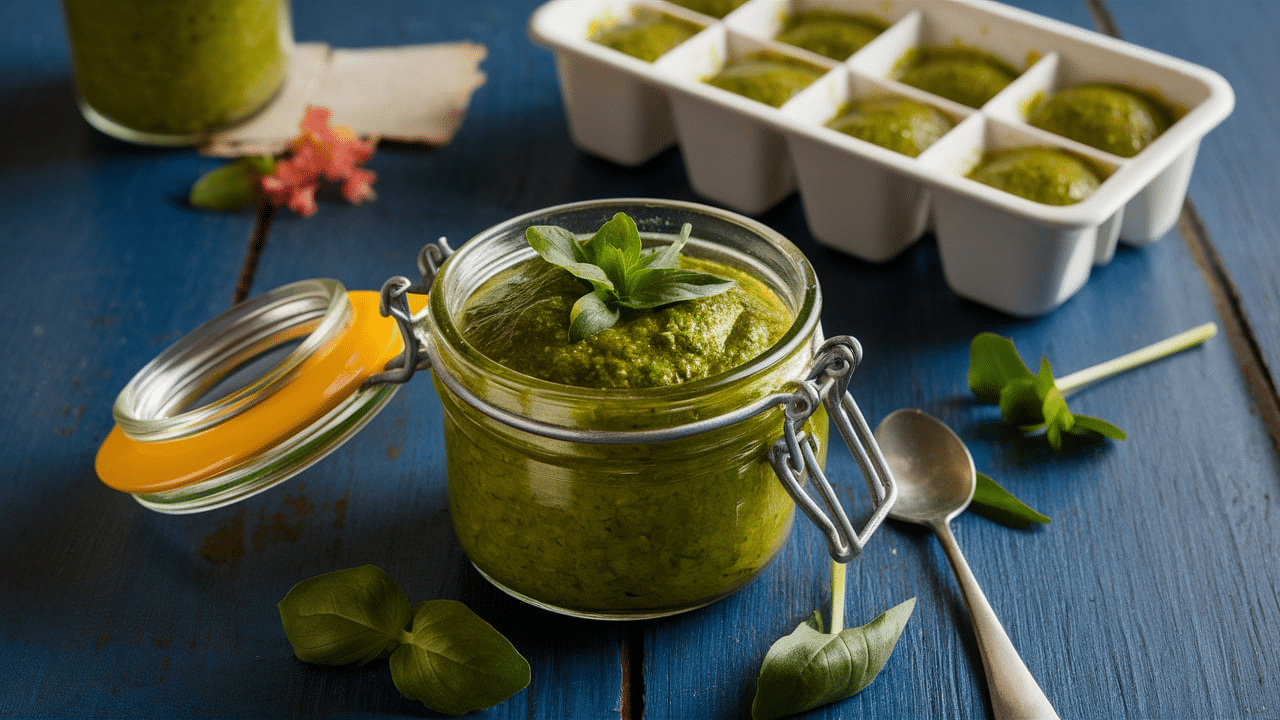
Spoon your pesto into a clean jar or container. Store it in the fridge for up to one week. For longer storage, spoon it into an ice cube tray and freeze it. Once frozen, pop the cubes into a zip-top bag. Now you’ve got quick portions ready whenever you need!
This homemade basil flower pesto is fresh, fun, and full of flavor. Use it on pasta, sandwiches, or even as a dip for veggies. You’ll be surprised how tasty those little flowers can be!
Tips:
- If you like a creamier pesto, add a tablespoon of cream or a bit of ricotta.
- For a dairy-free version, skip the cheese and add a little nutritional yeast instead.
- Add this pesto to pasta, pizza, sandwiches, or roasted veggies—it’s super versatile!
This basil flower pesto is a great way to use the whole plant and enjoy something fresh and homemade. Give it a try the next time your basil starts to bloom!
Using Basil Flower–Infused Pesto
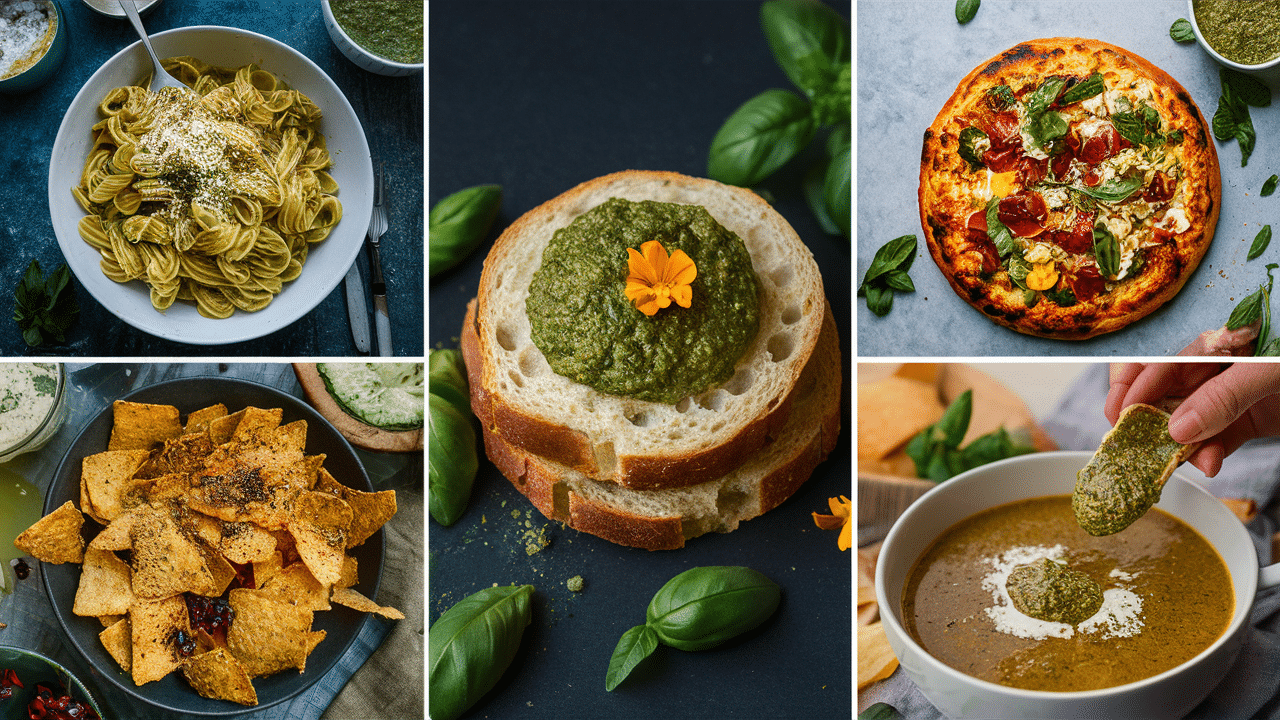
Once you’ve made your basil flower pesto, the fun part begins—using it! This pesto is super versatile and adds a fresh, floral twist to everyday meals.
- Toss with pasta: This is the classic choice. Mix your pesto with hot pasta and a little pasta water to make it creamy and smooth.
- Spread on sandwiches: Use it in place of mayo or mustard for extra flavor on grilled cheese, turkey sandwiches, or wraps.
- Add to pizza: Skip the red sauce and spread pesto on your pizza crust. Top with cheese and your favorite veggies or meats.
- Use as a dip: Serve it with crackers, fresh veggies, or even as a topping for deviled eggs.
- Stir into soups: Add a spoonful to vegetable or tomato soup for a burst of basil goodness.
No matter how you use it, basil flower pesto adds fresh flavor and a homemade touch to any dish!
Flavor: Basil Leaves vs. Basil Flowers
Basil leaves and flowers come from the same plant, but they each have a slightly different flavor.
Basil Leaves
- Basil leaves are what most people use in cooking.
- They have a strong, sweet, and slightly peppery flavor that gives pesto its bold taste.
- The younger the leaves, the softer and sweeter they are. Older leaves can taste a little more bitter.
Basil Flowers: Mild and Slightly Floral
- Basil flowers have a lighter, more delicate flavor.
- They still taste like basil but with a hint of floral or herbal notes.
- Some people say they’re a little spicier or more fragrant than the leaves but not as strong.
You can use basil flowers along with the leaves to balance out the flavors in your pesto. The flowers add a gentle twist without overpowering the dish. If you’re out of leaves, the flowers can stand in on their own, especially when mixed with other herbs or greens.
Mixing both gives your pesto a more complex and interesting taste—fresh, slightly sweet, and full of garden flavor!
Tips for Harvesting and Using Basil Flowers in Pesto
Basil flowers are often overlooked, but they’re packed with flavor and easy to use—especially in pesto.
1. Pick them early in the day: Harvest basil flowers in the morning when they’re fresh and full of natural oils. This is when they smell and taste the best.
2. Choose young, tender flowers: Younger flowers have a softer texture and milder flavor. Avoid flowers that look dry, brown, or past their prime.
3. Snip with clean scissors: Use clean kitchen scissors or garden snips to cut the flower stems. This helps avoid damaging the plant and keeps your harvest clean.
4. Rinse gently: Flowers are delicate, so rinse them under cool, gentle water to remove any dirt or bugs. Pat dry with a paper towel.
5. Use right away or store short-term: Basil flowers are best used fresh. If needed, you can keep them in a glass of water on the counter for a day or two—just like fresh herbs.
6. Use them with or without the leaves: You can make pesto using just basil flowers, or mix them with basil leaves for a fuller, more familiar flavor.
Using basil flowers is a fun and easy way to get creative in the kitchen while making the most of your garden. With a little care, these tiny blooms can turn into something truly tasty!
Conclusion
Using basil flowers in pesto is a simple way to try something new and make the most of your garden. These tiny blooms may be small, but they add a soft, floral twist to your favorite pesto recipe. Whether you mix them with basil leaves or use them on their own, basil flowers bring a fresh flavor and a fun change from the usual.
The best part? You’re using every part of the plant instead of letting it go to waste. With just a few ingredients and easy steps, you can create a delicious spread that works on pasta, sandwiches, veggies, and more.
So next time your basil plant starts to bloom, don’t pinch those flowers off and toss them—grab your food processor and make something tasty! Basil flower pesto is a great way to get creative in the kitchen while staying close to the garden. Give it a try and enjoy!


